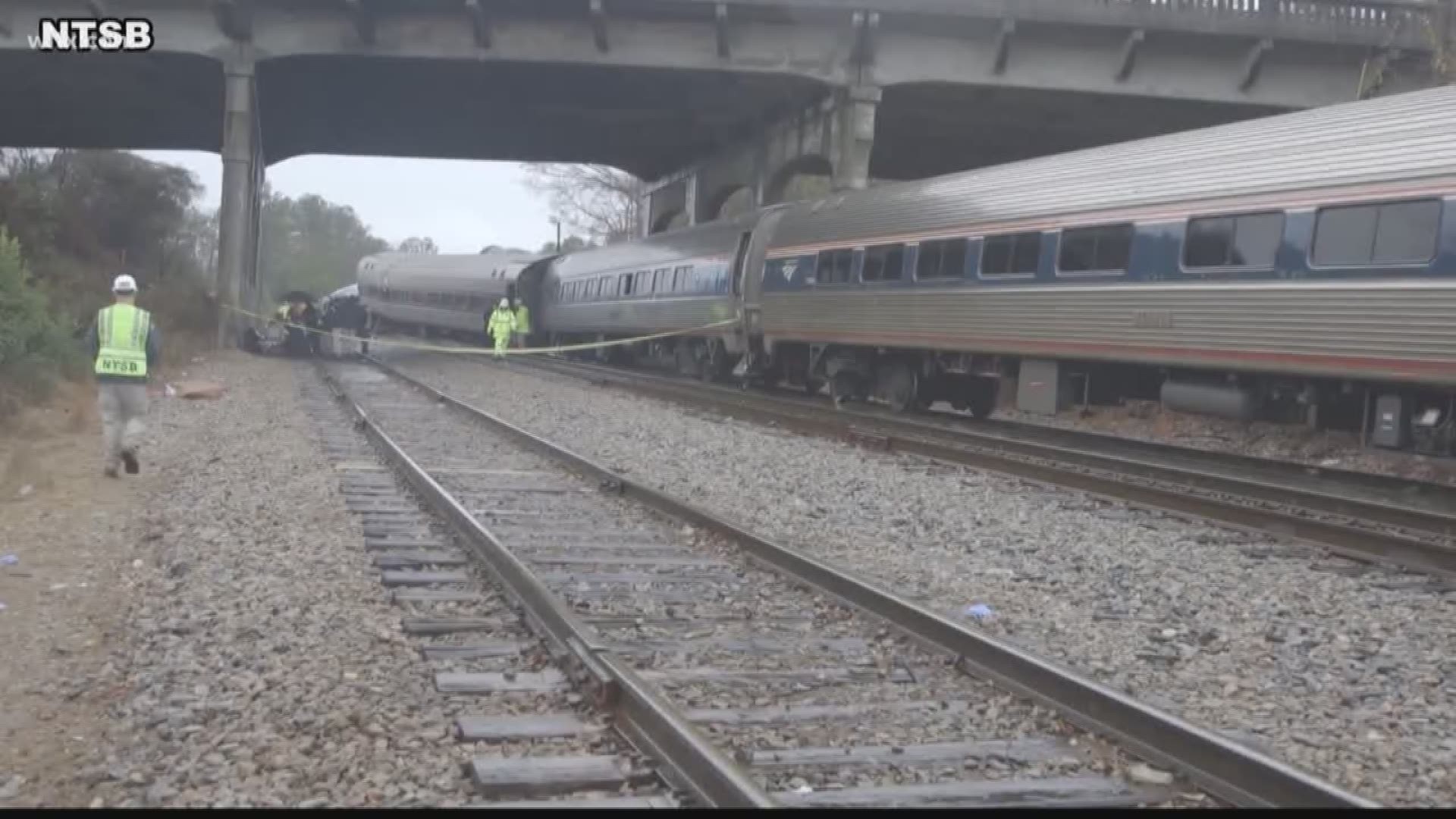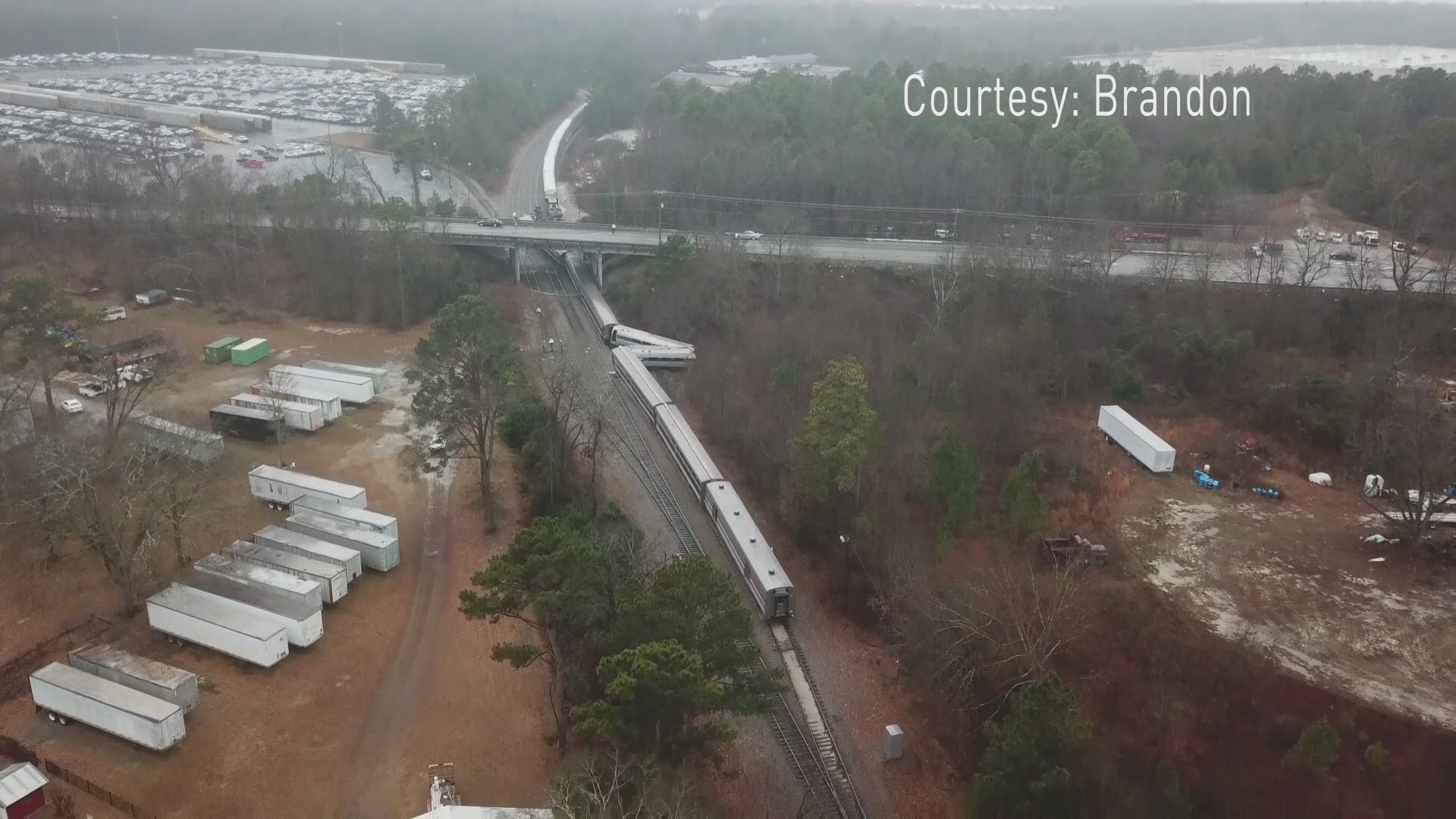Lexington County, SC (WLTX) - An Amtrak train was braking in the final seconds before a fatal collision with a parked CSX train in South Carolina, according to data supplied by recorders recovered from the crash.
The National Transportation Safety Board spent Monday examining the wreckage left behind of that collision that took place early Sunday morning at Charleston Highway and Pine Ridge Road.
The crash left Michael Kempf, the Amtrak train's engineer, and Michael Cella, its conductor, dead, and injured 116 passengers aboard the rail cars. No one was aboard the CSX freight train at the time of the collision.


The passenger train was on its normal route between New York and Miami when the catastrophe happened at 2:35 a.m.
In an afternoon briefing Monday, NTSB Chairman Robert Sumwalt took reporters through the final seconds that the data recorders--which were found undamaged at the crash site--were able to provide.
At seven seconds before impact, Sumwalt says the horn of the Amtrak sounded for three seconds. At that point, the train was traveling at 56 miles an hour, just below the allowable speed in that area of 59 miles an hour.
At five seconds prior, the brake pipe pressure began decreasing, an indicator that the brakes were being applied, and the throttle was moved from full to idle. The speed was now down to 54 miles an hour.
At three seconds, emergency braking was induced by the engineer. A moment later, the Amtrak collided with the locomotive of the CSX train while traveling at 50 MPH. The force of that jolt moved the CSX train back 15 feet from its location.
Investigators have focused their probe on a train track switch near the crash site which was in the wrong position. Because of that positioning, the Amtrak train was diverted off its main track, taking instead along a 659 foot long segment of side rails which was where the CSX train was parked.
That switch is a manual, hand-thrown device, and it would have been CSX employees' responsibility to make sure it was in the correct position.
"We want to understand why that was the case," Sumwalt said.
Sumwalt added there were no mechanical problems with the switch.
His team interviewed the CSX engineer, conductor, dispatcher, and master Monday. They'll interview the surviving Amtrak crew Tuesday.
At the time of the crash, the rail lines in the region were getting upgrades, and all signals were operating under what's known as a track warrant. That meant CSX dispatchers were in charge of giving authorization to train engineers to proceed on different section of the tracks.
The upgrades are for a system called positive train control, which some say could have prevented the crash. Related Coverage: What is Positive Train Control?
Sumwalt didn't want to reveal what the CSX employees told them until all interviews are complete, and when asked if they were to blame, Sumwalt wouldn't comment on that at this time.
"I'm confident that our investigators will be able to piece this back together," Sumwalt said.
Sumwalt expects for his crews to be in the area through the weekend.


